 W
WThe Arrow Collar Man was the name given to the various male models who appeared in advertisements for shirts and detachable shirt collars manufactured by Cluett Peabody & Company of Troy, New York. The original campaign ran from 1905–31, though the company continued to refer to men in its ads and its consumers as "Arrow men" much later.
 W
WAv Pak is a traditional blouse-dress worn by women in Cambodia. It’s literal translation is embroidery shirt in English.The blouse shared many attributes with the Kebaya blouse-dress of Indonesia, including the elaborate embroidered gold-threads used in formal versions of the Kebaya. It is usually worn with the Sampot Hol,a garment worn around the lower body which sometimes uses a more formal and elegant gold thread in the Khmer tradition. However, the Sarong is still frequently used with the Av Pak by ethnic Chams and Javanese in the poor and rural parts of the country.
 W
WA Baja jacket is a type of Mexican jacket with a single large pocket on the front, and vents on the side. They are more commonly made out a coarse woolen fabric known as "jerga". They are often decorated with patterns consisting of horizontal stripes on the sleeves and hood, and vertical stripes down the rest of the jacket. The drawstrings are often flatter and more rectangular than most jacket drawstrings, and always made of the same material as the rest of the jacket.
 W
WThe barong tagalog, more commonly known simply as barong, is an embroidered long-sleeved formal shirt for men and a national dress of the Philippines. Barong tagalog combines elements from both the precolonial native Filipino and colonial Spanish clothing styles. It is traditionally made with sheer textiles (nipis) woven from piña or abacá; although in modern times, cheaper materials like silk, ramie, or polyester are also used. It is used in special occasions in the Philippines.
 W
WA blouse is a loose-fitting upper garment that was worn by workmen, peasants, artists, women, and children. It is typically gathered at the waist or hips so that it hangs loosely ("blouses") over the wearer's body. Today, the word most commonly refers to a girl's or woman's dress shirt. It can also refer to a man's shirt if it is a loose-fitting style, though it rarely is. Traditionally, the term has been used to refer to a shirt which blouses out or has an unmistakably feminine appearance.
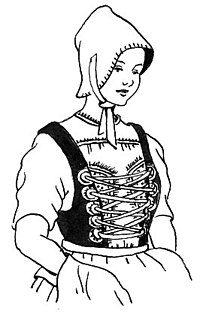 W
WA bodice is an article of clothing for women and girls, covering the torso from the neck to the waist. The term typically refers to a specific type of upper garment common in Europe during the 16th to the 18th century, or to the upper portion of a modern dress to distinguish it from the skirt and sleeves. The name bodice comes from an older garment called a pair of bodies.
 W
WA bowling shirt is a style of camp shirt in which the fabric, color and design vary greatly, but frequently incorporate contrasting earth tones and simple geometric designs, with more expensive ones often made of silk. They may have a single pocket on the left—small logos or monogram initials are also common options on the left breast.
 W
WA Cache-cœur is a top for women, composed of two finished triangular parts, each having a strap. It is closed by overlapping the two segments and tying the straps behind the back or along the side, depending on the length. The triangular shape of the sides makes the garment a type of V-neck.
 W
WThe camisa blouse is a garment that originated in the Philippines. It is made from a cloth that has been woven using thread made from the pineapple plant. The thread is known as piña thread. Clothing and accessories, like shawls, were made out of piña. These began to be woven in the Philippines in the 16th century, and are still being made today. THE TEXTILE MUSEUM says that "The pineapple plant is not a native species to the Philippines it is thought to have been introduced by the Spanish". Because the cloth took a very long time to make, it was highly sought after and wearing a camisa blouse was seen as a sign of wealth.
 W
WA camisole is a sleeveless undergarment / innerwear typically worn by women, normally extending to the waist. The camisole is usually made of satin, nylon, silk, or cotton.
 W
WThe Canezou, c. 1835, is a type of clothing, generally worn alongside a corsage.
 W
WA cardigan is a type of knitted garment that has an open front.
 W
WA chemise or shift is a classic smock, or a modern type of women's undergarment or dress. Historically, a chemise was a simple garment worn next to the skin to protect clothing from sweat and body oils, the precursor to the modern shirts commonly worn in Western nations.
 W
WA chemisette is an article of women's clothing worn to fill in the front and neckline of any garment. Chemisettes give the appearance of a blouse or shirt worn under the outer garment without adding bulk at the waist or upper arm.
 W
WA choli is a blouse or a bodice-like upper garment that is commonly cut short leaving the midriff bare, it is worn along with a sari in the Indian subcontinent. The choli is also part of the ghagra choli costume in the Indian subcontinent.
 W
WA crew neck is a type of shirt or sweater that has a round neckline and no collar, often worn with other layers. The name dates back to 1939 and was named after a type of sweater worn by rowers.
 W
WA crop top is a top that exposes the waist, navel, or abdomen.
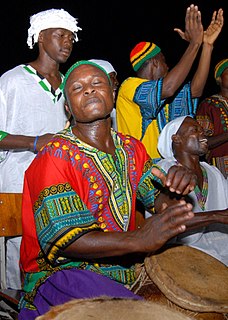 W
WThe dashiki is a colorful garment worn mostly in West Africa. It is called Kitenge in East Africa and has been a dominant wear in Tanzania and later Kenya and Somalia. It covers the top half of the body. It has formal and informal versions and varies from simple draped clothing to fully tailored suits. A common form is a loose-fitting pullover garment, with an ornate V-shaped collar, and tailored and embroidered neck and sleeve lines. It is frequently worn with a brimless Kufi cap and pants. It has been popularized and claimed by communities in the African diaspora, especially African Americans.
 W
WA dickey is a type of false shirt-front - originally known as a detachable bosom - designed to be worn with a tuxedo or men's white tie, usually attached to the collar and then tucked into the waistcoat or cummerbund. Better dickeys have a trouser tab at the end to secure them down, preventing the dickey from popping out. The rigid plastic dickey came into fashion in the latter years of the 19th century, and was one of the first successful commercial applications of celluloid.
 W
WA Garibaldi shirt was a woman's fashion, a red wool shirt named after the Italian patriot Giuseppe Garibaldi first popularized in 1860. It was the direct ancestor of the modern women's blouse.
 W
WA Ghanaian smock is a plaid shirt that is similar to the dashiki, worn by men in Ghana. There are also female versions of it. The smock is also called Bun-nwↃ or Bana by Mamprusis, fugu or a batakari in the northern region, dansika in Frafra, fugu or Banaa in Kusaal both in the upper east region. It is worn by kings in the three northern regions but is now popular across Ghana. The smock originated in the northern region of Ghana, see external links for photos. The smock is not unlike the national attire of Burkina Faso known as faso dan fadi.
 W
WA gilet or body warmer is a sleeveless jacket resembling a waistcoat or blouse. It may be waist- to knee-length and is typically straight-sided rather than fitted; however, historically, gilets were fitted and embroidered. In 19th-century dressmaking a gilet was a dress bodice shaped like a man's waistcoat.
 W
WThe guayabera also known as Camisa de Yucatán is a men's summer shirt, worn outside the trousers, distinguished by two vertical rows of closely sewn pleats running the length of the front and back of the shirt. Typically made of linen, silk, or cotton, and appropriate for hot or humid weather, guayaberas are popular in Cuba, the Caribbean, Mexico, Central America, South America, Southeast Asia, the south of Spain and Portugal.
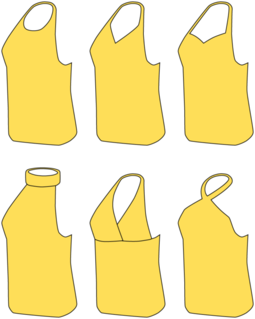 W
WHalterneck is a style of women's clothing strap that runs from the front of the garment around the back of the neck, generally leaving the upper back uncovered. The name comes from livestock halters. The word "halter" derives from the Germanic words meaning "that by which anything is held". Halter is in the German word Büstenhalter, a dated word for bra, with Büste meaning female chest and breasts.
 W
WA Henley shirt is a collarless pullover shirt, characterized by a round neckline and a placket about 3 to 5 inches long and usually having 2–5 buttons. It essentially is a collarless polo shirt. The sleeves may be either short or long, and it can be made in almost any fabric, although cotton, cotton-polyester blends, and thermals are by far the most popular. Henley shirts are generally regarded as menswear, but women's versions have appeared as business casual and casual wear as well.
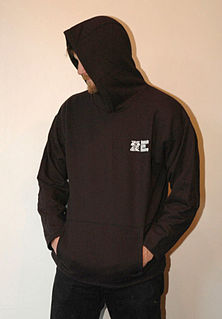 W
WA hoodie is a sweatshirt with a hood. Hoodies often include a muff sewn onto the lower front, and (usually) a drawstring to adjust the hood opening.
 W
WIhram clothing includes men's and women's garments worn by Muslim people while in a state of Iḥrām, during either of the Islamic pilgrimages, Ḥajj and/or ʿUmrah. The main objective is to avoid attracting attention. Men's garments often consist of two white unhemmed sheets and are universal in appearance. The top is draped over the torso, and the bottom is secured by a belt; plus a pair of sandals. Women's clothing, however, varies considerably and reflects regional as well as religious influences, but they often do not wear special clothing or cover their faces.
 W
WThe Isiagu, also called Chieftaincy, is a pullover shirt similar to the dashiki that is worn by Igbo people. It is usually worn on special occasions like weddings. The shirt may be long or short sleeved. Some shirts have gold buttons that are linked by a chain. There is usually a breast pocket on the front. Traditionally, the Isiagu was given to a man when he received a chieftaincy title. The shirt is usually worn with a red fez hat or the Igbo leopard cap. The leopard cap is known as Okpu Agu in the Igbo language.
 W
WThe jeogori is a basic upper garment of the hanbok, a traditional Korean garment, which has been worn by both men and women. Men usually wear the jeogori with a baji or pants while women wear the jeogori with chima, or skirts. It covers the arms and upper part of the wearer's body.
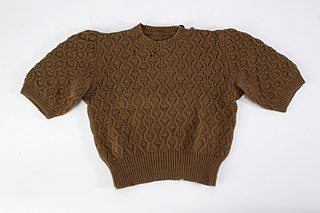 W
WTraditionally, a jersey is an item of knitted clothing, generally made of wool or cotton, with sleeves, worn as a pullover, as it does not open at the front, unlike a cardigan. It is usually close-fitting and machine knitted in contrast to a guernsey that is more often hand knit with a thicker yarn. The word is usually used interchangeably with sweater.
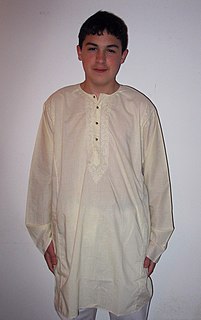 W
WA kurta is a loose collarless shirt worn in many regions of South Asia, and now also worn around the world. Tracing its roots to Central Asian nomadic tunics, or upper body garments, of the late-ancient- or early-medieval era, the kurta has evolved stylistically over the centuries, especially in the Indian subcontinent, as a garment for everyday wear as well as for formal occasions.
 W
WA leotard is a unisex skin-tight one-piece garment that covers the body from the crotch to the shoulder. The garment was made famous by the French acrobatic performer Jules Léotard (1838–1870). There are sleeveless, short-sleeved, and long-sleeved leotards. A variation is the unitard, which also covers the legs.
 W
WA marinière, or tricot rayé, is a cotton long-armed shirt with horizontal blue and white stripes. Characteristically worn by quartermasters and seamen in the French Navy, it has become a staple in civilian French fashion and, especially outside France, this kind of striped garment is often part of the stereotypical image of a French person. It is also known as a Breton shirt, as many sailors in the French Navy were from Brittany.
 W
WA poet shirt is a type of shirt made as a loose-fitting blouse with full bishop sleeves, usually decorated with large frills on the front and on the cuffs. Typically, it has a laced-up V-neck opening, designed to pull over the head, but can have a full-length opening fastened by buttons. The collar may be standing or folded over with points. Fabrics commonly used in its manufacture include linen, cotton, satin and velvet, while frills may be of the same fabric or of lace. Originally intended as a male garment, it is also worn by women today.
 W
WA polo shirt is a form of shirt with a collar, a placket neckline with two or three buttons, and an optional pocket. Polo shirts are usually short sleeved; they were used by polo players originally in India in 1859 and in Great Britain during the 1920s.
 W
WA rugby shirt, also known as a rugby jersey, is worn by players of rugby union or rugby league. It usually has short sleeves, though long sleeves are common as well.
 W
WA safari jacket or bush jacket is a garment originally designed for the purpose of going on safari in the African bush. When paired with trousers or shorts, it becomes a safari suit. A safari jacket is commonly a lightweight cotton drill or lighter poplin jacket, traditionally khaki in color, with a self-belt, epaulets, four or more expandable bellows pockets and often with cartridge loops.
 W
WShalwar kameez is a traditional combination dress worn by women, and in some regions by men, in South Asia, and Central Asia.
 W
WThe suea pat or suea pai is a type of shirt worn by women from different ethnic backgrounds in Laos and Northern Thailand and other areas in Southeast Asia. These ethnic groups typically include the Lao, the Tai Lue, and the Tai Yuan etc.
 W
WA T-shirt, or tee shirt, is a style of fabric shirt named after the T shape of its body and sleeves. Traditionally, it has short sleeves and a round neckline, known as a crew neck, which lacks a collar. T-shirts are generally made of a stretchy, light and inexpensive fabric and are easy to clean. The T-shirt evolved from undergarments used in the 19th century and, in the mid-20th century, transitioned from undergarment to general-use casual clothing.
 W
WA tube top, colloquially known in the UK as a boob tube, is a shoulderless, sleeveless women's garment that wraps around the upper torso. It is generally tight over the breasts, and usually uses elastic bands at its top and bottom to prevent it from falling. The tube top's precursor was a beachwear or informal summer garment worn by young girls in the 1950s that became more widely popular in the 1970s and returned to popularity in the 1990s and 2000s.
 W
WA tunic is a garment for the body, usually simple in style, reaching from the shoulders to a length somewhere between the hips and the knees. The name derives from the Latin tunica, the basic garment worn by both men and women in Ancient Rome, which in turn was based on earlier Greek garments that covered wearers' waists.
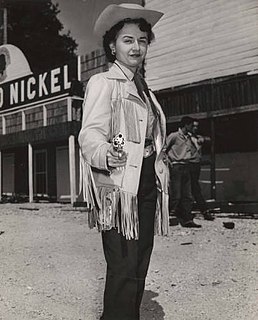 W
WWestern wear is a category of men's and women's clothing which derives its unique style from the clothes worn in the 19th century Wild West. It ranges from accurate historical reproductions of American frontier clothing, to the stylized garments popularized by Western film and television or singing cowboys such as Gene Autry and Roy Rogers in the 1940s and 1950s. It continues to be a fashion choice in the West and Southwestern United States, as well as people associated with country music or Western lifestyles, for example the various Western or Regional Mexican music styles. Western wear typically incorporates any of the following, Western shirts with pearl snap fasteners and vaquero design accents, blue jeans, cowboy hat, a leather belt, and cowboy boots.
 W
WA yoke is a shaped pattern piece which forms part of a garment, usually fitting around the neck and shoulders, or around the hips to provide support for looser parts of the garment, such as a gathered skirt or the body of a shirt. Yoke construction was first seen in the 19th century. Bodice yokes were first seen in the 1880s, whilst the yoke skirt, a skirt suspended from a fitted hip yoke, was first seen in 1898.